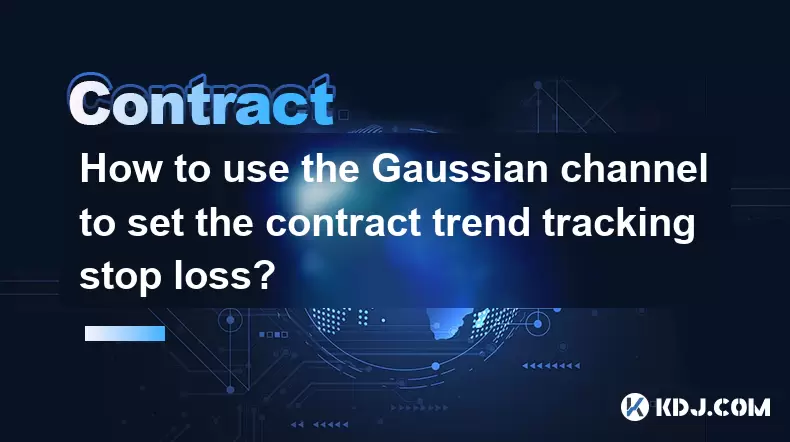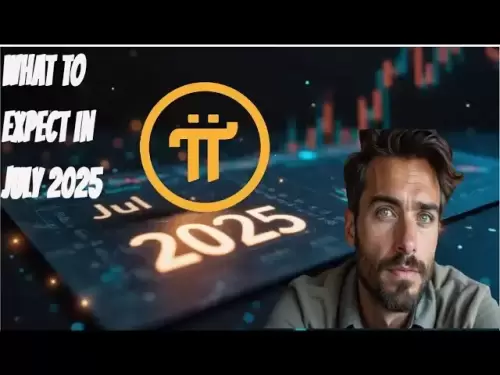-
 Bitcoin
Bitcoin $106,731.2224
-1.05% -
 Ethereum
Ethereum $2,444.9804
-1.20% -
 Tether USDt
Tether USDt $1.0003
0.01% -
 XRP
XRP $2.1882
0.09% -
 BNB
BNB $651.1435
-0.61% -
 Solana
Solana $148.3252
-2.09% -
 USDC
USDC $1.0000
0.01% -
 TRON
TRON $0.2787
0.55% -
 Dogecoin
Dogecoin $0.1598
-3.16% -
 Cardano
Cardano $0.5520
-2.43% -
 Hyperliquid
Hyperliquid $39.0960
-2.64% -
 Bitcoin Cash
Bitcoin Cash $516.9519
2.98% -
 Sui
Sui $2.7011
-2.95% -
 Chainlink
Chainlink $13.0582
-1.71% -
 UNUS SED LEO
UNUS SED LEO $8.9250
-2.53% -
 Stellar
Stellar $0.2359
-0.18% -
 Avalanche
Avalanche $17.3856
-3.73% -
 Toncoin
Toncoin $2.8095
-3.56% -
 Shiba Inu
Shiba Inu $0.0...01121
-1.95% -
 Litecoin
Litecoin $85.2795
-0.85% -
 Hedera
Hedera $0.1471
-2.15% -
 Monero
Monero $319.8004
1.12% -
 Dai
Dai $1.0001
0.01% -
 Ethena USDe
Ethena USDe $1.0001
0.02% -
 Bitget Token
Bitget Token $4.5344
-1.07% -
 Polkadot
Polkadot $3.3224
-2.96% -
 Uniswap
Uniswap $6.9697
-2.75% -
 Aave
Aave $266.1658
-2.25% -
 Pepe
Pepe $0.0...09414
-3.41% -
 Pi
Pi $0.4913
-3.29%
Two-way order opening method of Bitcoin contract
In the fast-paced world of Bitcoin contract trading, traders can choose between Limit Orders for precise price execution and Market Orders for swift completion, tailoring their strategies to risk tolerance and market conditions.
Nov 20, 2024 at 08:43 pm

Two-way Order Opening Method of Bitcoin Contract
In the dynamic and fast-paced world of cryptocurrency trading, understanding the intricacies of order opening methods can significantly enhance your trading strategies and potentially improve your chances of profitability. When it comes to Bitcoin contracts, traders have the flexibility to choose between two primary order opening methods: Limit Order and Market Order. Each method comes with its unique advantages and drawbacks, and selecting the appropriate one depends on your trading goals, risk tolerance, and market conditions.
Limit Order: Precision and Control
A Limit Order allows traders to specify a predetermined price at which they wish to buy or sell a Bitcoin contract. This method grants traders greater control over the execution of their trades and ensures that the order is filled only when the market price reaches or surpasses the specified limit price.
Steps to Open a Limit Order:
- Select Limit Order Type: Choose the "Limit" order type from the order placement window.
- Specify Limit Price: Determine the desired price at which you want the order to be executed. For buy orders, set a limit price below the current market price, and for sell orders, set a limit price above the current market price.
- Enter Order Quantity: Indicate the number of Bitcoin contracts you wish to buy or sell.
- Submit Order: Once you have entered all the necessary details, click the "Buy" or "Sell" button to submit your Limit Order.
- Monitor Order Status: The submitted Limit Order will remain active until it is executed or canceled manually. You can monitor the status of your order through the order book or trading history.
Market Order: Speed and Efficiency
In contrast to Limit Orders, Market Orders prioritize swift execution over price precision. With a Market Order, you instruct the exchange to execute your trade immediately at the best available market price. This method is advantageous when you seek to enter or exit a position quickly, even if it means accepting a slightly less favorable price.
Steps to Open a Market Order:
- Select Market Order Type: Choose the "Market" order type from the order placement window.
- Enter Order Quantity: Specify the number of Bitcoin contracts you wish to buy or sell.
- Submit Order: Click the "Buy Market" or "Sell Market" button to submit your Market Order.
- Immediate Execution: A Market Order is executed instantly at the prevailing market price. You do not need to wait for a specific price to be reached.
Choosing the Right Order Opening Method
The choice between Limit Orders and Market Orders depends on your trading strategy and risk tolerance.
- Limit Orders: Ideal for traders seeking precise price execution, risk management, and control over the trade's entry or exit point. Limit Orders are particularly useful when you anticipate a specific price level to trigger your trade.
- Market Orders: Suitable for traders prioritizing swift execution and who are willing to accept the current market price. Market Orders are beneficial when entering or exiting volatile markets or during high-volume trading periods.
Understanding Order Execution Delays
It is important to note that order execution in Bitcoin contracts may not always be instantaneous, especially during periods of high market volatility or limited liquidity.
- Slippage: Slippage occurs when the market price moves significantly between the time you submit an order and its execution. This can result in a slightly different execution price compared to your intended limit price.
- Rejection: Orders may sometimes be rejected due to insufficient liquidity or rapidly changing market conditions. Rejection is more likely to occur with Limit Orders than Market Orders.
Enhancing Order Opening Strategies
To further refine your order opening strategies, consider the following additional tips:
- Use Stop-Loss Orders: Protect your profits or limit potential losses by using Stop-Loss Orders. A Stop-Loss Order automatically closes your position when the market price reaches a predetermined level.
- Set Take-Profit Orders: Define your target profit level by setting a Take-Profit Order. This order automatically sells your position at a specified price, ensuring you secure your profits when reached.
- Monitor Market Conditions: Keep a close eye on market trends, news, and order book activity to make informed decisions about order placement and execution.
Conclusion
Understanding the two-way order opening method of Bitcoin contracts empowers you with greater control and flexibility in executing your trading strategies. By carefully considering your trading goals, risk tolerance, and market conditions, you can select the appropriate order type and optimize your chances of successful trades. Remember to stay vigilant, monitor market conditions, and continuously refine your trading skills to navigate the dynamic world of cryptocurrency trading.
Disclaimer:info@kdj.com
The information provided is not trading advice. kdj.com does not assume any responsibility for any investments made based on the information provided in this article. Cryptocurrencies are highly volatile and it is highly recommended that you invest with caution after thorough research!
If you believe that the content used on this website infringes your copyright, please contact us immediately (info@kdj.com) and we will delete it promptly.
- Deutsche Bank's Bitcoin Custody Play: A New York Minute on Crypto Services
- 2025-07-01 22:30:12
- ZachXBT, Ripple, and RLUSD Adoption: A Deep Dive
- 2025-07-01 22:30:12
- Open XP Redemption on Optimism: Get Ready for OP Tokens on July 15!
- 2025-07-01 22:35:12
- Altcoins in June 2025: Data, Trends, and What's Next for Crypto
- 2025-07-01 21:30:12
- SUI Price Breakout Watch: Will 2025 Forecasts Hit the Mark?
- 2025-07-01 21:30:12
- BTCBULL: Riding Bitcoin's Bull Run to Crypto Glory
- 2025-07-01 20:30:11
Related knowledge

How to use the price slope to filter the false breakthrough signal of the contract?
Jun 20,2025 at 06:56pm
Understanding the Concept of Price Slope in Contract TradingIn contract trading, especially within cryptocurrency derivatives markets, price slope refers to the rate at which the price changes over a specific time period. It helps traders assess the strength and sustainability of a trend. A steep slope may indicate strong momentum, while a shallow slope...

How to determine the expected volatility of the contract through the volatility cone?
Jun 19,2025 at 12:28pm
Understanding the Basics of Volatility in Cryptocurrency ContractsIn the realm of cryptocurrency trading, volatility is a key metric that traders use to assess potential risk and reward. When dealing with futures contracts, understanding how volatile an asset might become over time is crucial for position sizing, risk management, and strategy developmen...

How to formulate a contract intraday trading plan in combination with the pivot point system?
Jun 21,2025 at 03:42pm
Understanding the Basics of Pivot Points in Cryptocurrency TradingPivot points are technical analysis tools used by traders to identify potential support and resistance levels. These levels are calculated using the previous day's high, low, and closing prices. In the context of cryptocurrency trading, where markets operate 24/7, pivot points help trader...

How to adjust the contract position ratio through the price fluctuation entropy?
Jun 22,2025 at 11:42am
Understanding Price Fluctuation Entropy in Cryptocurrency ContractsIn the world of cryptocurrency futures trading, price fluctuation entropy is a relatively new concept used to measure market volatility and uncertainty. It derives from information theory, where entropy refers to the degree of randomness or unpredictability in a system. In crypto contrac...

How to use the volume swing indicator to predict the contract volume-price divergence?
Jun 18,2025 at 11:42pm
Understanding the Volume Swing IndicatorThe volume swing indicator is a technical analysis tool used primarily in cryptocurrency trading to evaluate changes in volume over time. Unlike price-based indicators, this metric focuses solely on trading volume, which can provide early signals about potential market reversals or continuations. The key idea behi...

How to use the Gaussian channel to set the contract trend tracking stop loss?
Jun 18,2025 at 09:21pm
Understanding the Gaussian Channel in Cryptocurrency TradingThe Gaussian channel is a technical indicator used primarily in financial markets, including cryptocurrency trading, to identify trends and potential reversal points. It is based on statistical principles derived from the normal distribution, commonly known as the Gaussian distribution or bell ...

How to use the price slope to filter the false breakthrough signal of the contract?
Jun 20,2025 at 06:56pm
Understanding the Concept of Price Slope in Contract TradingIn contract trading, especially within cryptocurrency derivatives markets, price slope refers to the rate at which the price changes over a specific time period. It helps traders assess the strength and sustainability of a trend. A steep slope may indicate strong momentum, while a shallow slope...

How to determine the expected volatility of the contract through the volatility cone?
Jun 19,2025 at 12:28pm
Understanding the Basics of Volatility in Cryptocurrency ContractsIn the realm of cryptocurrency trading, volatility is a key metric that traders use to assess potential risk and reward. When dealing with futures contracts, understanding how volatile an asset might become over time is crucial for position sizing, risk management, and strategy developmen...

How to formulate a contract intraday trading plan in combination with the pivot point system?
Jun 21,2025 at 03:42pm
Understanding the Basics of Pivot Points in Cryptocurrency TradingPivot points are technical analysis tools used by traders to identify potential support and resistance levels. These levels are calculated using the previous day's high, low, and closing prices. In the context of cryptocurrency trading, where markets operate 24/7, pivot points help trader...

How to adjust the contract position ratio through the price fluctuation entropy?
Jun 22,2025 at 11:42am
Understanding Price Fluctuation Entropy in Cryptocurrency ContractsIn the world of cryptocurrency futures trading, price fluctuation entropy is a relatively new concept used to measure market volatility and uncertainty. It derives from information theory, where entropy refers to the degree of randomness or unpredictability in a system. In crypto contrac...

How to use the volume swing indicator to predict the contract volume-price divergence?
Jun 18,2025 at 11:42pm
Understanding the Volume Swing IndicatorThe volume swing indicator is a technical analysis tool used primarily in cryptocurrency trading to evaluate changes in volume over time. Unlike price-based indicators, this metric focuses solely on trading volume, which can provide early signals about potential market reversals or continuations. The key idea behi...

How to use the Gaussian channel to set the contract trend tracking stop loss?
Jun 18,2025 at 09:21pm
Understanding the Gaussian Channel in Cryptocurrency TradingThe Gaussian channel is a technical indicator used primarily in financial markets, including cryptocurrency trading, to identify trends and potential reversal points. It is based on statistical principles derived from the normal distribution, commonly known as the Gaussian distribution or bell ...
See all articles

























































































